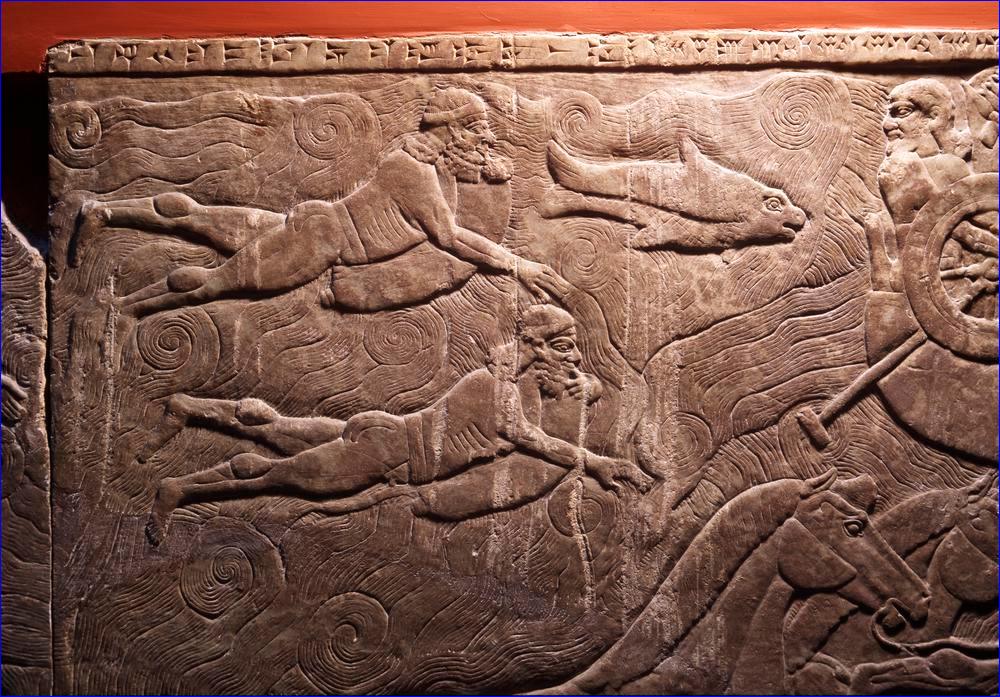


 British Museum)
British Museum)
The gypsum panel is one of several excavated in the 1840s from the Northwest Palace, which was built on the Tigris River around 865 B.C. on the orders of King Ashurnasirpal II. Originally located around the interior walls of the throne room and royal apartments, the carved panels depict the king leading a military campaign, engaging in rituals and hunting animals.
This panel fragment, which is in the collection of The British Museum, shows several men and horses crossing a river. The horses are swimming, pulled on leads by cavalry soldiers. One soldier is free-swimming, one is rowing a small boat, and two are using goat-skin bags that the soldiers are inflating to stay afloat.
A cuneiform inscription running across the top of the panel traces the king's lineage and describes his key accomplishments. The two-dimensionality of the perspective -- in which the figures appear complete and not half-submerged -- is typical in Assyrian art, according to The British Museum.
Animal skin or bladder floats appear several times in the Nimrud wall panels, and they were likely made from goats or pigs. The floats were used to help keep a soldier's weapons dry and to allow an army to sneak up on an enemy. Ashurnasirpal II was known for his military prowess as well as his brutality, and his innovative tactics -- including the goat-skin floats -- helped him expand his empire considerably in the ninth century B.C.
While it's interesting to ponder how much of the world the Assyrian army might have conquered if they'd had scuba gear, the humble goat skin still represents a key invention that helped them maintain power in Mesopotamia for centuries, until the empire fell around 600 B.C.

or register to post a comment.